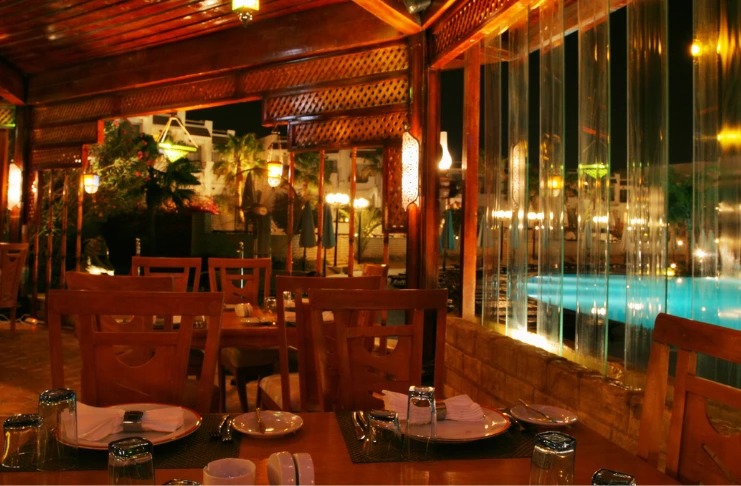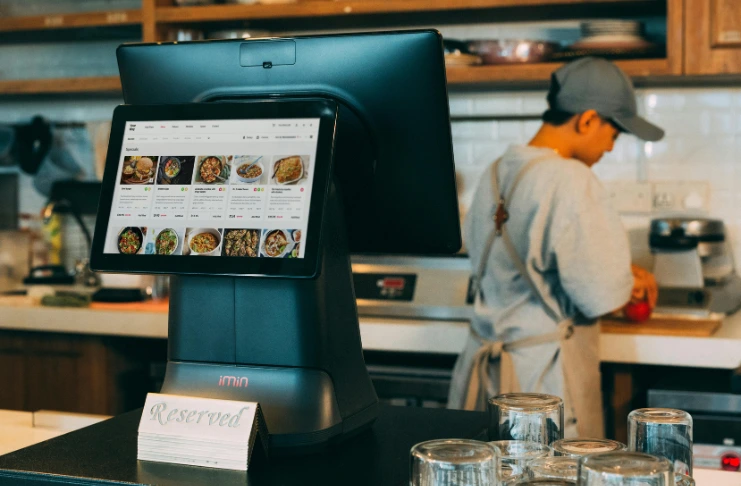
A restaurant’s success isn’t just built on great food—it thrives on efficiency, consistency, and a seamless, positive dining experience too. Behind every smooth service is a well-structured operation where team members know their roles, technology enhances workflows, and resources are used wisely. When restaurant operations run like a well-oiled machine, customers enjoy faster service, staff feel less stressed, and the business sees higher profits. But achieving this efficiency level requires more than just good intentions—it demands innovative strategies, proper planning, and a commitment to continuous improvement.
In an industry where margins are tight and customer expectations are high, operational efficiency can make or break a restaurant. Whether you’re looking to speed up service, reduce overhead costs, or improve team productivity, optimizing restaurant operations is the key to long-term success. Let’s dive into practical, game-changing strategies to take your restaurant’s efficiency to the next level.
What Defines Restaurant Operations?
Restaurant operations encompass all the processes and activities required to run a restaurant smoothly. These include front-of-house (FOH) services, back-of-house (BOH) efficiency, inventory control, customer experience management, and financial oversight. Whether you own a fine-dining restaurant, a casual eatery, or a fast-food chain, improving restaurant operations is critical for boosting revenue, reducing costs, and maintaining a loyal customer base.
Tips To Improve Restaurant Operations
1. Optimize Your Menu For Profitability

Optimizing your restaurant’s menu is a strategic approach to enhance profitability, streamline operations, and elevate the customer experience. By analyzing sales data, simplifying menu offerings, and integrating digital solutions, you can significantly improve efficiency and revenue. The Pareto Principle applies to many restaurants, where 20% of menu items drive 80% of sales. By analyzing sales data, restaurants can identify their top-performing dishes, allowing them to optimize menus, refine offerings, and strategically promote best sellers for increased profitability.
1.1 Analyze Sales Data To Identify Top-Performing Dishes
Delving into your sales data provides valuable insights into customer preferences and item profitability. You can make informed decisions about your menu development and offerings by identifying which dishes are most popular and yield the highest margins. For instance, implementing menu engineering techniques allows you to categorize dishes based on popularity and profitability, enabling strategic placement and promotion of high-margin items.
1.2 Reduce Menu Complexity To Improve Efficiency And Reduce Food Waste
A streamlined menu simplifies kitchen operations and enhances the dining experience. By streamlining restaurant operations and focusing on core, high-demand items, restaurants can reduce preparation time, minimize food waste, and better manage inventory.
Simplifying the menu allows for better resource allocation and ensures that popular dishes are consistently available, improving customer satisfaction.
1.3 Implement Digital Menus And QR Codes For A Seamless Customer Experience
The adoption of digital menus and QR codes has revolutionized the dining experience by offering contactless ordering and real-time updates. This technology enhances customer convenience and allows restaurants to adjust menu items and prices swiftly. For example, QR code ordering platforms have integrated AI-powered recommendation engines that tailor suggestions based on previous customer choices, reducing the ordering process from eight clicks to just two.
Additionally, digital menus can be optimized using menu engineering tools to highlight profitable items and influence customer choices effectively.

2. Enhance Online Ordering & Delivery Services
With the growing demand for food delivery, restaurants must optimize their online ordering and delivery services to stay competitive. A seamless digital ordering system, third-party delivery partnerships, and efficient delivery management tools can help increase revenue while improving customer experience.
2.1 Offer A User-Friendly Online Ordering System On Your Website
A dedicated online ordering system allows customers to place orders directly, reducing reliance on third-party apps and saving on commission fees. A mobile-optimized, easy-to-navigate menu with high-quality images and secure payment options enhances the ordering experience.
2.2 Partner With Third-Party Delivery Platforms
While direct ordering is ideal, partnering with DoorDash, Uber Eats, and Grubhub helps expand customer reach. These platforms provide marketing exposure, bringing in new customers and increasing order volume.
2.3 Use Delivery Management Software To Track Orders & Optimize Routes
Investing in delivery management software helps streamline order fulfillment, track real-time deliveries, and reduce wait times by up to 25%. Features like route optimization, GPS tracking, and automated dispatching ensure fast and efficient deliveries, leading to higher customer satisfaction.
3. Invest In Restaurant Technology

Investing in advanced restaurant technology is pivotal for enhancing operational efficiency, improving customer satisfaction, and boosting profitability. You can streamline various aspects of your restaurant’s operations by upgrading your Point of Sale (POS) system, implementing Kitchen Display Systems (KDS), and utilizing reservation and waitlist software.
Industry Insight:
In a Q&A with SmartBrief, Dr. Chad Moutray, VP of Research and Knowledge at the National Restaurant Association, discusses key trends shaping the restaurant industry. His insights provide a deeper understanding of how restaurants can improve operational efficiency:
“Technology is becoming a critical driver of efficiency and customer experience in the restaurant industry. Eighty-three percent of operators believe their investments in technology provide a competitive advantage, while 69% say automation has improved productivity. These advancements are helping streamline kitchen operations, enhance the guest experience, and optimize staffing.”
3.1 Use POS System For Real-Time Inventory And Sales Tracking
Modern POS systems offer comprehensive solutions that integrate sales tracking with real-time inventory management. These systems enable restaurants to monitor stock levels live, preventing issues like overstocking or stockouts. Features include offline connectivity, allowing inventory tracking even without internet access, and mobile applications for remote management. These systems facilitate informed decision-making, reduce waste, and enhance efficiency by providing detailed insights into sales patterns and inventory status.
3.2 Use Kitchen Display Systems (KDS) To Streamline Back-of-House Operations
Implementing a KDS can significantly improve kitchen operations by replacing traditional paper tickets with digital displays. This transition enhances order accuracy, reduces preparation times, and improves communication between front-of-house and back-of-house staff. KDS solutions offer real-time order tracking, allowing kitchen staff to prioritize tasks effectively and manage high-volume periods efficiently. The system’s monitoring of preparation times and identifying bottlenecks contributes to a more streamlined workflow and better resource allocation.
3.3 Implement Reservation And Waitlist Software To Manage Customer Flow
Adopting reservation and waitlist software is essential for optimizing customer flow and enhancing the dining experience. These tools allow customers to book tables in advance, reducing wait times and improving satisfaction. Such innovations enhance guest convenience and improve operational efficiency.
4. Reduce Employee Turnover & Improve Training
Employee retention is a crucial factor in running a successful restaurant. High turnover rates lead to increased hiring costs, operational disruptions, and decreased customer satisfaction. Restaurants can build a motivated and loyal workforce by offering competitive wages, providing ongoing training, and fostering a positive workplace culture.
4.1 Offer Competitive Wages And Employee Benefits
One of the primary reasons for high employee turnover in the restaurant industry is low wages and lack of benefits. According to the National Restaurant Association, nearly 78% of restaurant employees leave within their first year due to insufficient pay and job security. Offering competitive salaries, health insurance, paid time off, and performance-based bonuses can significantly reduce turnover. Restaurants that provide benefits see 25% higher employee retention than those that don’t.
4.2 Provide Ongoing Training Programs To Improve Service & Efficiency
A well-trained workforce is more efficient, confident, and engaged. Studies show that restaurants with structured training programs experience higher productivity and 20% fewer errors in service. Implementing training modules on customer service, food safety, and technology usage (like POS systems) ensures that employees can handle their roles effectively. Online training programs and mentorship initiatives further enhance skill development, leading to better service quality and improved customer experience.
4.3 Create A Positive Workplace Culture With Incentives & Career Growth Opportunities
A supportive work environment is key to retaining employees long-term. Encouraging open communication, recognizing employee achievements, and providing growth opportunities can significantly boost morale. Simple incentives like “Employee of the Month,” referral bonuses, and team-building activities can make a big difference in job satisfaction.
5. Improve Food & Inventory Management
Effective food and inventory management is essential for maintaining a profitable restaurant. Poor inventory control leads to food waste and operational inefficiencies. By implementing inventory tracking and accounting software, optimizing vendor relationships, and conducting regular audits, restaurants can significantly reduce costs and improve their bottom line.
5.1 Implement Inventory Tracking Software To Reduce Food Waste
Food waste is a significant challenge for the restaurant industry. Implementing a real-time inventory tracking system helps restaurants monitor stock levels, track ingredient usage, and reduce unnecessary purchases.
Industry Insight
Restaurants generate millions of tons of food waste annually. However, the landscape is shifting, with more restaurants adopting waste-reduction strategies, making a noticeable impact. An article in the Nation’s Restaurant News highlights the stats about this:
“Food waste challenges are serious. According to the United Nations Environment Programme’s Food Waste Index Report 2024, 1.05 billion tons of food waste were generated globally, equating to 132 kilograms per person.
Restaurants and other food services are a big part of this problem—contributing to 28% of this waste, or one-fifth of all the food available to consumers ends up as waste. Sometimes, food purchased by restaurants often ends up as pre-consumer waste (food that goes unused before it’s cooked or food that gets tossed because it spoils due to improper food storage before it can be used). Other times, customers leave large portions uneaten, contributing to post-consumer waste.”
A smart inventory system also integrates with POS data, giving insights into menu performance and ordering patterns for better forecasting. A inventory management system helps restaurants track stock in real time, reduce waste, and improve vendor coordination.
5.2 Optimize Vendor Relationships For Better Pricing And Fresh Ingredients
Building strong vendor relationships allows restaurants to negotiate better pricing, bulk discounts, and priority access to fresh ingredients. Reliable suppliers ensure consistent quality, reducing the risk of food spoilage. By working with multiple vendors, restaurants can compare pricing and secure the best deals. Utilizing restaurant vendor management software helps streamline communication, track deliveries, and manage invoices efficiently.
5.3 Conduct Regular Inventory Audits To Prevent Overstocking And Spoilage
Regular inventory audits prevent over-ordering and food spoilage, helping restaurants maintain optimal stock levels. Studies show that restaurants lose up to 20% of their annual revenue due to inventory mismanagement. Weekly or monthly audits ensure all ingredients are used before expiration dates, preventing unnecessary waste. Implementing First-In, First-Out (FIFO) inventory rotation further minimizes spoilage and maximizes food quality.
6. Focus On Speed & Efficiency
Speed and efficiency are key to maximizing customer satisfaction and profitability in today’s fast-paced dining industry. By streamlining kitchen workflows, optimizing table turnover rates, and implementing self-service kiosks, restaurants can improve service quality and boost revenue.
6.1 Streamline Kitchen Workflows To Reduce Prep and Cooking Times
An efficient kitchen setup ensures that food is prepared quickly without compromising quality. Organizing workstations, implementing a Kitchen Display System (KDS), and pre-portioning ingredients can cut prep time. Reducing unnecessary movement and assigning clear roles in the kitchen improves workflow, leading to faster service and happier customers.
6.2 Optimize Table Turnover Rates By Improving Service Efficiency
A higher table turnover rate means more customers are served per shift. Training staff to take orders efficiently, utilizing digital menus, and speeding up payment processing can significantly reduce wait times. According to a study 42% diners experience frustration due to incomplete orders.
6.3 Implement Self-Service Kiosks For Quick Ordering & Reduced Wait Times
Self-service kiosks allow customers to place orders seamlessly, reducing reliance on staff and improving accuracy. Faster ordering leads to improved customer experiences and higher sales.
7. Boost Customer Engagement & Retention

Keeping customers engaged and encouraging repeat visits is essential for a restaurant’s financial health and success. By launching loyalty programs, using personalized marketing, and implementing customer feedback systems, restaurants can build strong relationships and boost long-term profitability.
7.1 Launch Loyalty Programs To Encourage Repeat Business
Loyalty programs incentivize customers to return by offering rewards for repeat purchases. A study by Business wire shows that customers are more loyal to the restaurant brands if they are given offers and loyalty rewards. Digital rewards programs, such as points-based systems or exclusive discounts, help increase retention and drive customer lifetime value.
7.2 Use Personalized Marketing (Email & SMS) To Target Customer Preferences
Personalized marketing enhances customer engagement by delivering relevant promotions and offers based on preferences and order history. 72% of consumers only engage with marketing messages customized to their interests. Restaurants can leverage email and SMS campaigns to send special discounts, birthday offers, and new menu announcements, leading to higher conversion rates and stronger customer relationships.
7.3 Implement Customer Feedback Systems To Improve Service & Menu Offerings
Collecting and analyzing customer feedback helps restaurants refine their service and menu. 90% of diners check online reviews before visiting a restaurant, so addressing concerns and continuously improving is essential. Digital surveys, review requests, and social media engagement enhance transparency and trust.
8. Strengthen Your Restaurant’s Online Presence

A strong online presence is essential for restaurant success in today’s digital world. By optimizing your Google My Business (GMB) listing, leveraging social media marketing, and investing in SEO and online ads, you can attract more customers and drive higher revenue.
8.1 Optimize Your Google My Business Listing For Better Visibility
Your Google My Business (GMB) profile is crucial for local search rankings. A fully optimized GMB listing with accurate business details, high-quality images, updated menus, and positive customer reviews can increase visibility on Google Search and Maps. Restaurants with optimized listings attract more traffic and more in-person visits than those without.
8.2 Leverage Social Media Marketing To Attract Customers
Social media platforms like Instagram, Facebook, and TikTok are major in restaurant marketing. Engaging content, such as food photos, behind-the-scenes videos, and promotions, can significantly increase brand awareness and customer engagement. 85% of diners check restaurant social media before deciding where to eat.
9. Ensure Compliance with Health & Safety Regulations

Maintaining high health and safety standards is essential for running a successful restaurant. By training staff on food safety, staying updated on health codes, and investing in sanitation technology, restaurants can prevent violations, build customer trust, and ensure a safe dining environment.
9.1 Regularly Train Staff On Food Safety & Hygiene Practices
Proper food handling and hygiene training are crucial to preventing contamination and foodborne illnesses. Regular training on handwashing, cross-contamination prevention, and proper food storage helps minimize risks. Many states require ServSafe certification or equivalent training to ensure compliance with food safety regulations.
9.2 Stay Updated On Local And Federal Health Codes
Health regulations vary by location, and non-compliance can lead to hefty fines or even business closure. Regularly reviewing FDA Food Code updates, OSHA workplace safety guidelines, and local health department requirements is critical. Conducting internal health audits and following checklists ensures consistent adherence to safety protocols, reducing the risk of violations.
9.3 Invest In Sanitation Technology
Modern technology enhances restaurant hygiene. Installing touchless payment systems, UV air purifiers, and automated hand sanitizers reduces the spread of germs. Many restaurants have also adopted electrostatic sprayers for deep cleaning, ensuring high sanitation standards.
10. Monitor & Analyze Business Performance

Tracking and analyzing business performance is essential for restaurant success. By using restaurant analytics tools, conducting monthly performance reviews, and setting key performance indicators (KPIs), restaurant owners can make data-driven decisions to improve efficiency, profitability, and customer satisfaction.
10.1 Use Restaurant Analytics Tools To Track Sales, Expenses & Customer Preferences
Modern restaurant management software provides real-time insights into sales trends, customer behavior, inventory usage, and operational costs. Analytics report help restaurant owners track daily revenue, monitor high and low-performing menu items, and analyze customer spending habits. By leveraging these insights, restaurants can optimize their menu, adjust pricing strategies, and improve customer engagement.
10.2 Conduct Monthly Performance Reviews To Identify Areas For Improvement
Regular performance evaluations allow restaurant managers to pinpoint operational inefficiencies and implement corrective measures. Reviewing profit margins, labor costs, and sales trends ensures continuous growth. Data-driven decisions based on monthly insights can lead to an improvement in overall efficiency by eliminating bottlenecks and reducing waste.
10.3 Set Realistic KPIs To Measure Success
Defining Key Performance Indicators (KPIs) helps track restaurant performance effectively. Common KPIs include:
- Average ticket size – to monitor customer spending trends.
- Table turnover rate – to maximize seating efficiency.
- Labor cost percentage – to manage workforce expenses.
Conclusion
Running a successful restaurant requires efficient operations, excellent customer service, and smart use of technology. By improving workflow, training staff, managing inventory, and optimizing online ordering, restaurants can increase profitability and customer satisfaction. Small changes, like speeding up service, reducing waste, and enhancing marketing efforts, can make a big difference. Focus on efficiency, quality, and consistency; your restaurant will be set up for long-term success.
Frequently Asked Questions
Restaurant operations can be improved by optimizing workflows, investing in technology like POS systems and Kitchen Display Systems (KDS), and enhancing staff training. Streamlining inventory management, improving service speed, and leveraging data analytics for decision-making and operations management also boost efficiency and profitability.
Food service business operations can be enhanced by reducing kitchen inefficiencies, improving food prep and order accuracy, and implementing inventory tracking systems to minimize waste. Offering better employee training, maintaining high food safety standards, and adopting contactless ordering and payment options can also enhance customer experience.
The biggest challenge for restaurant operators is balancing rising operational costs with maintaining profitability. Labor shortages, food price fluctuations, and customer retention are ongoing issues, making it essential to focus on cost control, staff management, and customer engagement strategies to stay competitive.
To improve your restaurant business, analyze sales data, optimize menu pricing, enhance customer experience, and leverage digital marketing to attract more diners. Investing in restaurant automation, employee training, and online ordering systems can further streamline business operations and increase profitability.








